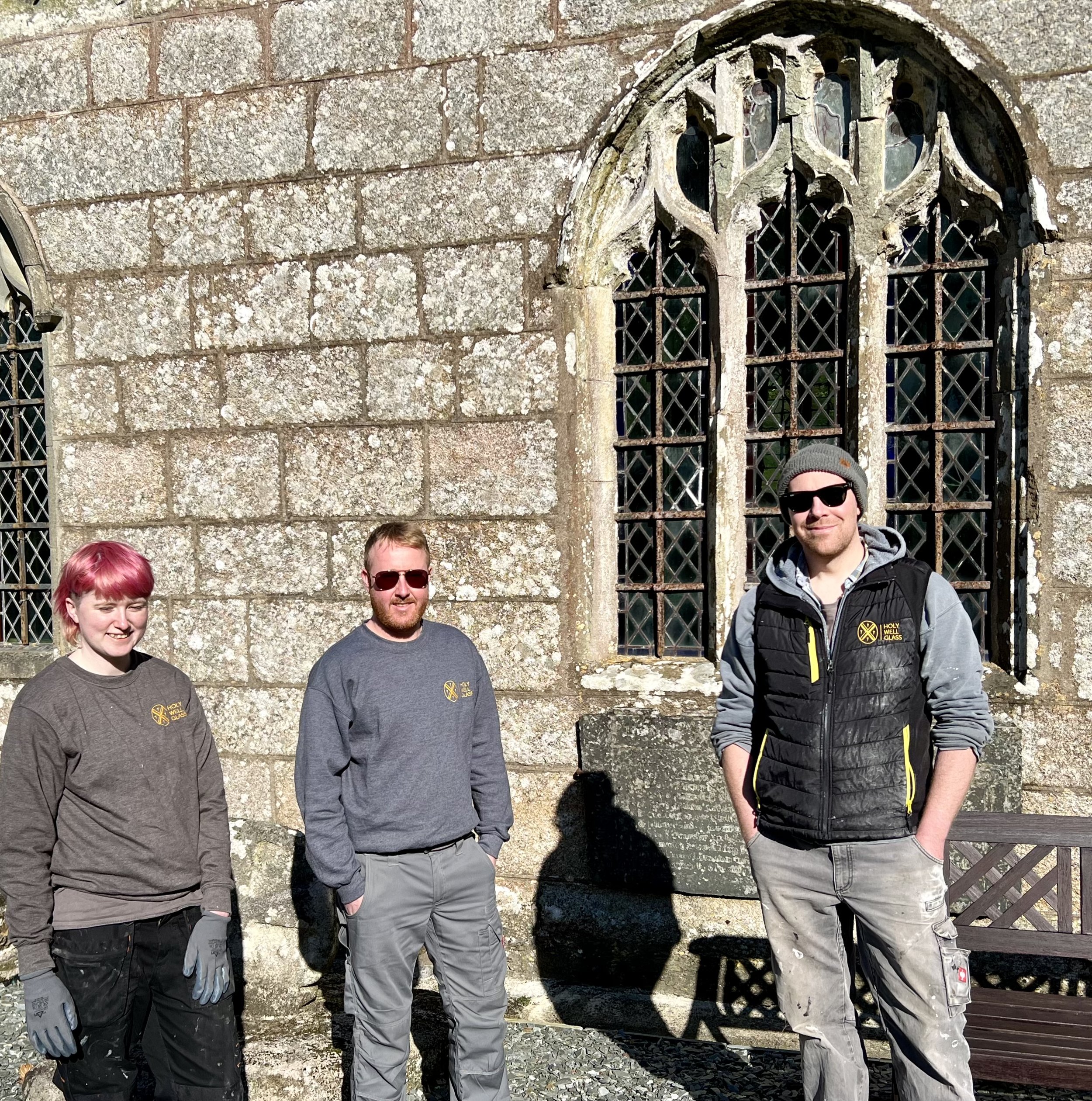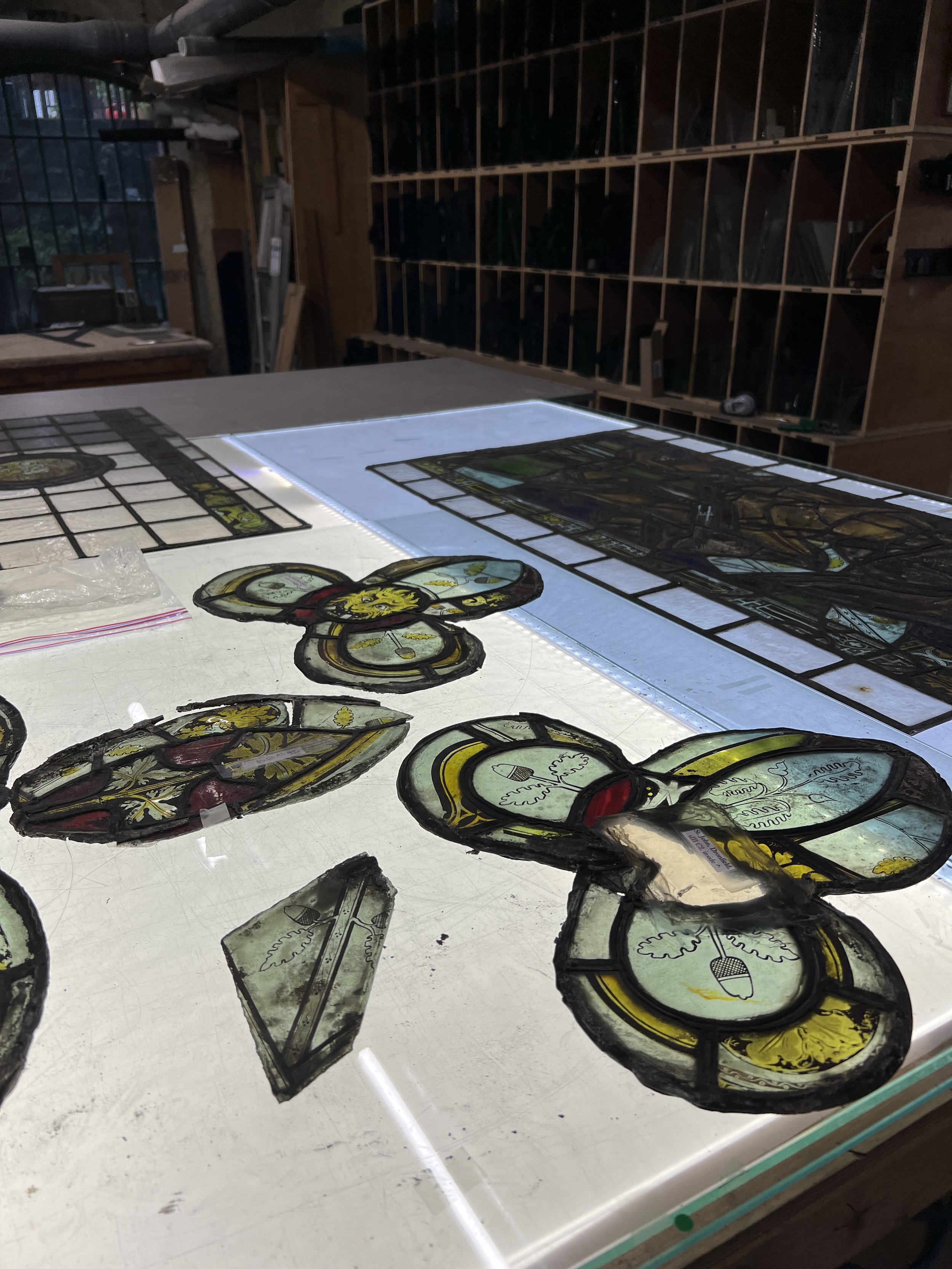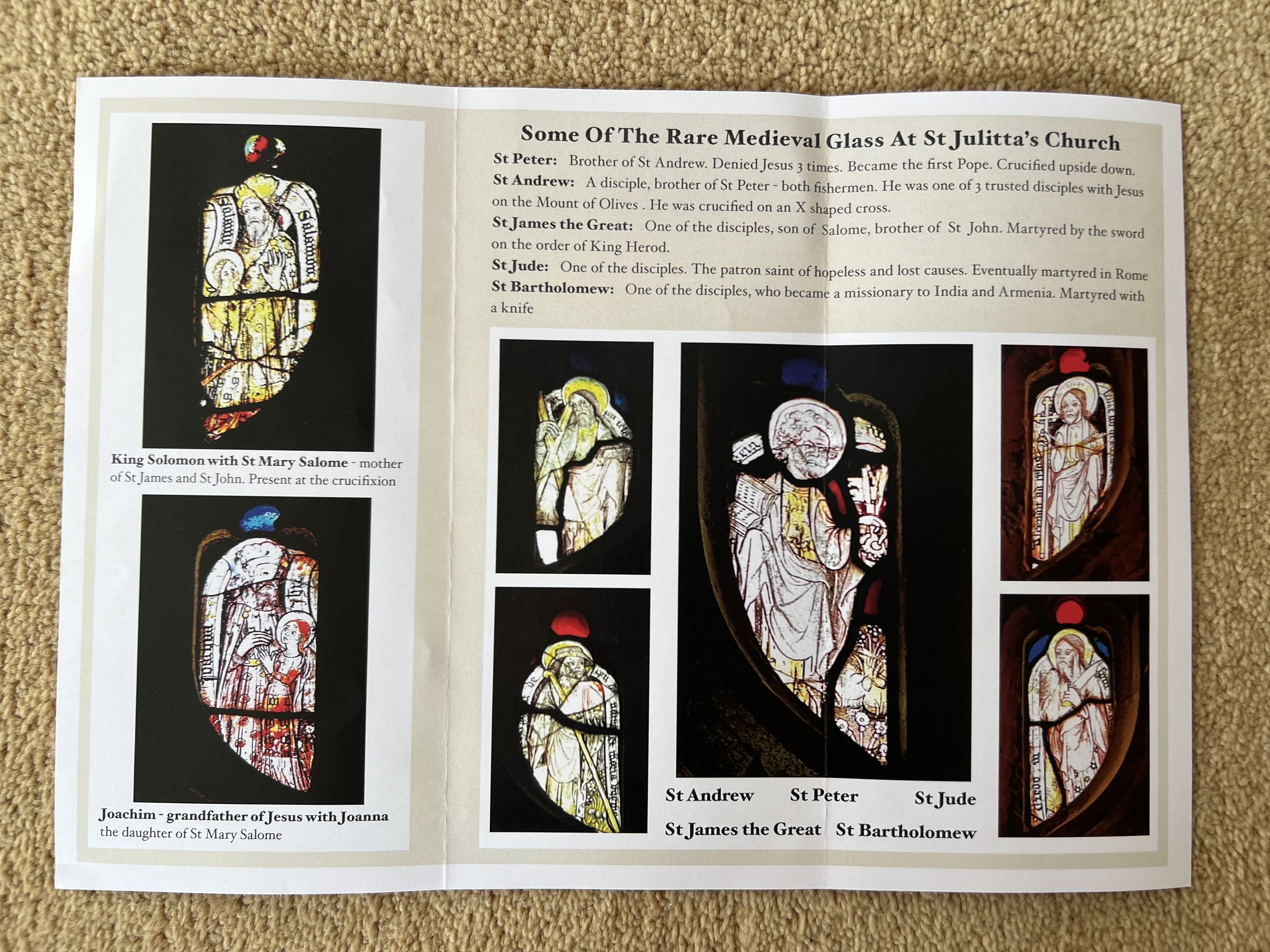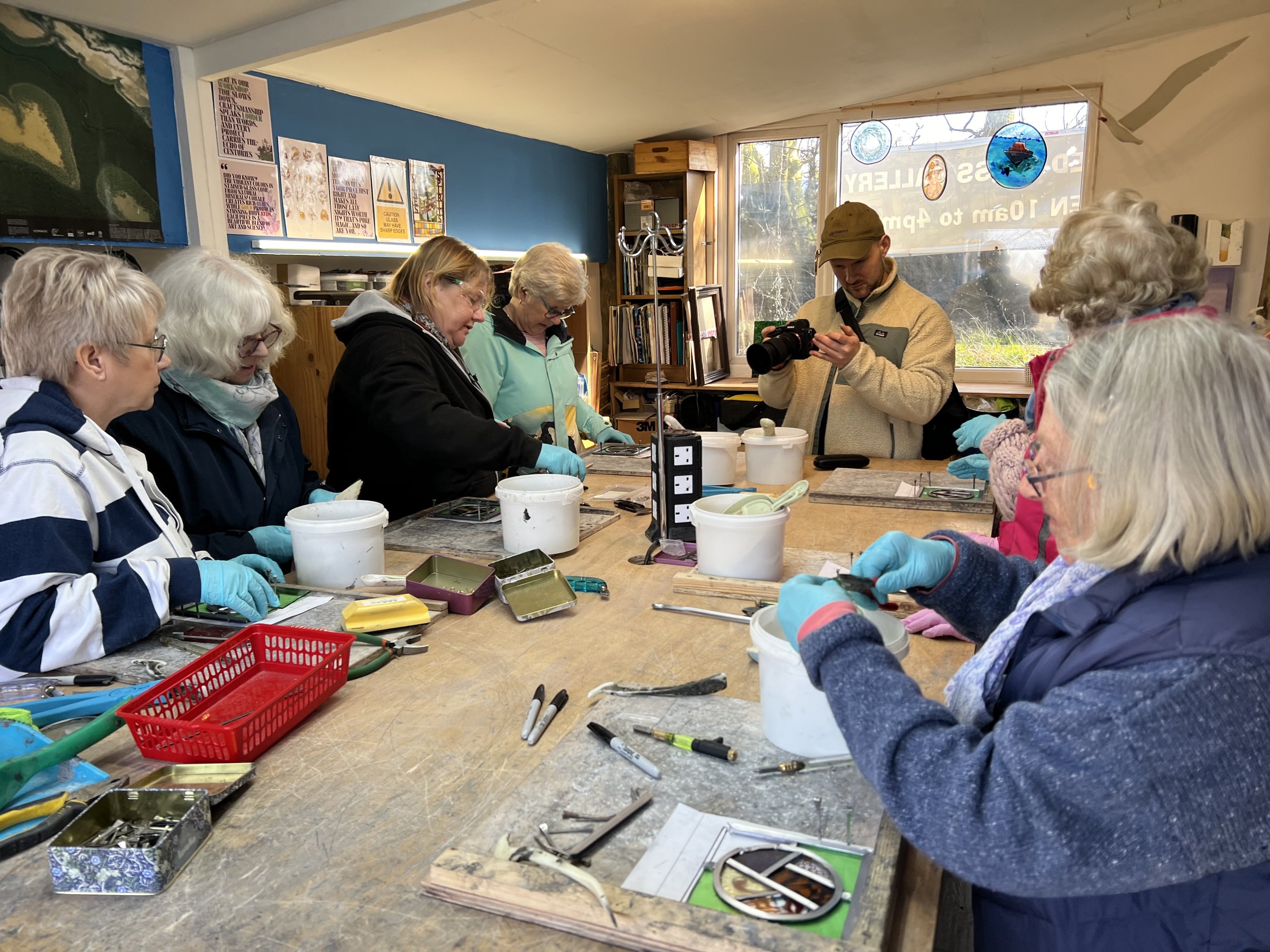Jack clare from HOLY WELL GLASS PREPARING A DETAILED SURVEY OF ALL THE WINDOWS Sept 2022 - AFTER 500 YEARS THIS IS ONE OF THE WORST!
Jack Clare with his team Jo and John arrive on Monday 3rd March 2025 ready to start the window removal.
Holy Well Glass have now been appointed as the main contractor for the glass and window restoration. The National Lottery Heritage Fund have offered a major grant. This generous grant together with a range of other significant grants, donations and funds for the Friends of Lanteglos Church means that the big restoration can go ahead.
During an early visit to Wells we found an amazing and well equipped glass workshop. The piece on the left above is from the Great Hall at St Bartholomew’s Hospital in London. On the far right above are some of the skilled glass crafts people hard at work. The whole place is very impressive in every way. The St Julitta’s stained glass will be making its way to the Wells Studio early 2025.
FUND RAISING LEAFLET FOR MEDIEVAL STAINED GLAS AND CRUMBLING WINDOWS
FUND RAISING LEAFLET FOR MEDIEVAL STAINED GLAS AND CRUMBLING WINDOWS
John Morton (1420 - 1500)
Cardinal and Archbishop of Canterbury
and Lord Chancellor of England
There is strong evidence of a link between the high status medieval stained glass at Lanteglos Church and John Morton - Archbishop of Canterbury 500 years ago! We plan to research this further.
The whole of the church roof was restored and the south aisle roof built with oak timbers that were felled between 1469 and 1491 according to Dendrochronology carried out by English Heritage.
Lanteglos church is relatively isolated with no great wealth in the area 500 years ago. Funding must have come from outside.
The south aisle with mullioned windows and the porch were also added in the late 15th century
The south aisle stained glass is 15th century in style and regarded as very high quality
There were 2 Lanteglos Rectors with the surname Morton 1466 and 1489. Likely to be relatives
There was another Rector, Thomas Maddys 1487 who was known to be close to John Morton. Richard III locked Morton in the Tower of London as a Lancastrian supporter, but he escaped to Flanders. Thomas Maddys was one of the people sent to Flanders with a pardon from Richard III for John Morton - but Morton decided not to risk it!
There is a Morton coat of arms in the north chancel window. With very expensive gold rays surrounding it.
John Morton was known as “The Building Bishop” because he built or enhanced many ecclesiastic buildings
Morton was born in Dorset, had links with the Archbishop of Exeter and was some time Chancellor of the Duchy of Cornwall
The letter ‘m’ on some clothes and elsewhere in the stained glass was sometimes used to indicate Morton’s imput
THE MORTON COAT OF ARMS in the north chancel 15th century window at St Julitta’s
A recently noticed link between the stained glass and John Morton is the PRESENCE of the letter m on the maiden’s dress which is a recognised way for Morton to attribute his benevolence
THE STAINED GLASS WORKSHOP AT LUCIAN GLASS STUDIO WITH JUDE GOSS. FILMED BY ADAM FOR THE LOTTERY HERITAGE.











